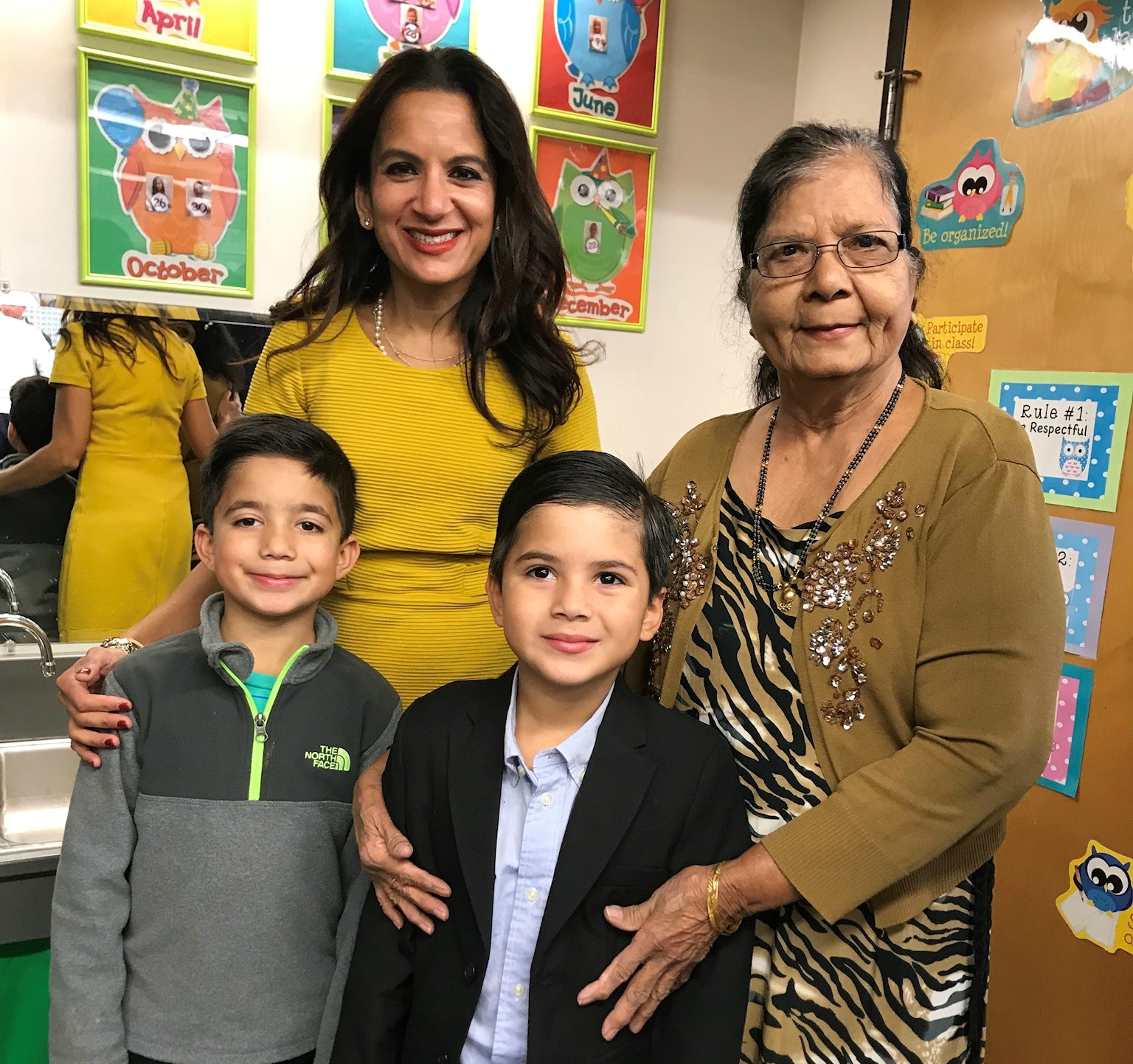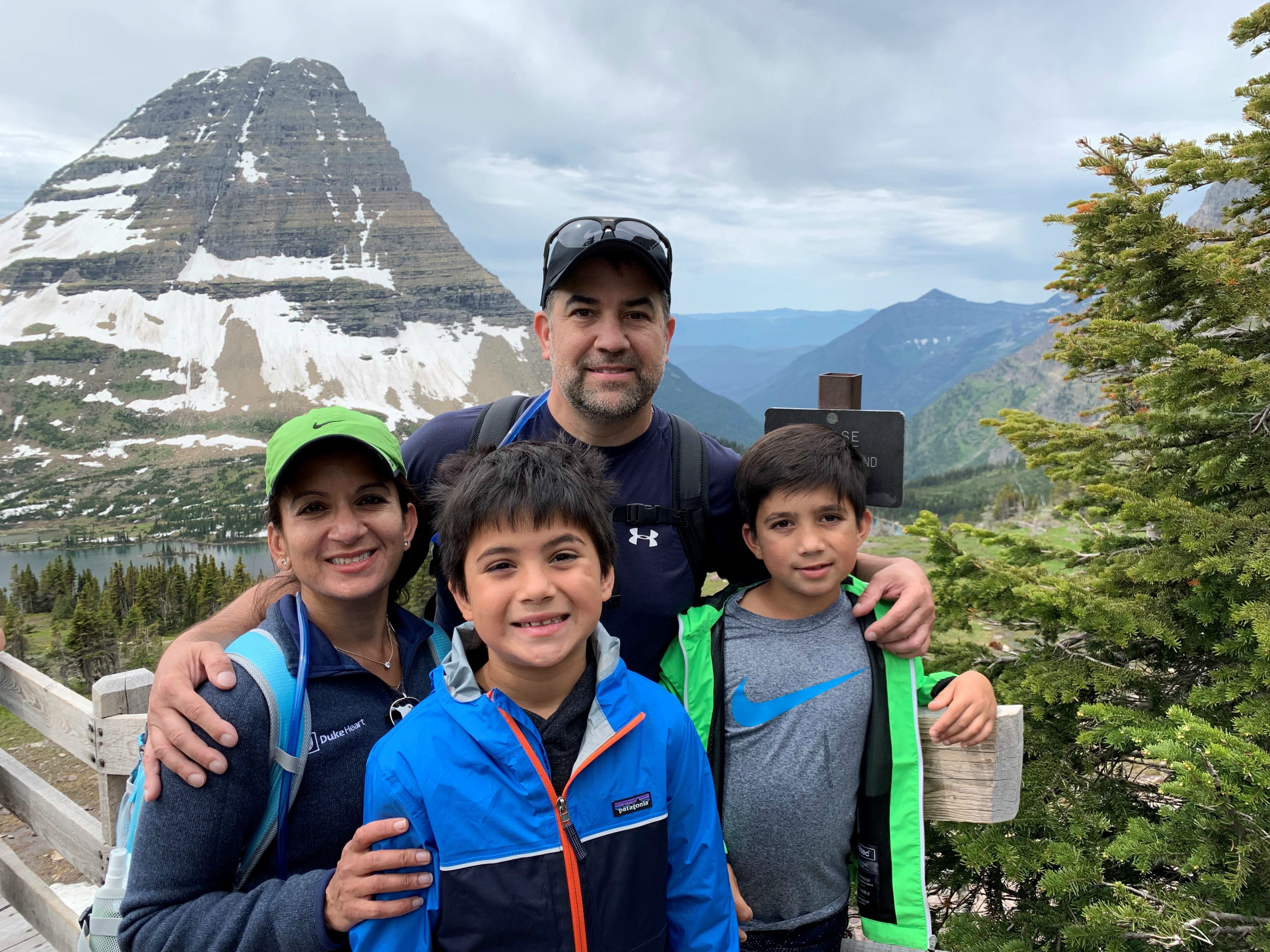On stage at the Miss America 2020 pageant, Svati Shah looked into the camera and delivered her important message.
It wasn’t merely that heart disease and stroke kill more women than all forms of cancer combined. Or that cardiovascular diseases are largely preventable.
It was telling the television audience of over 3.6 million people there are clear ways to change that – ways that go far beyond the usual advice of diet and exercise.
“By urging more women to take up careers in science and medicine,” she said. “By ensuring women are included in medical research. By empowering women to change the fact that women living 20 miles apart can have a 20-year difference in lifespan.
“When women come together to demand change, change happens.”
Dr. Svati Shah is an associate dean in the Duke University School of Medicine and, I’m proud to say, a volunteer for my organization, the American Heart Association. I asked her to speak on our behalf at the Miss America pageant because of the passion and spirit she brings to this fight, and to emphasize that women are helping lead the way.
I hope girls who watched were as inspired by Svati as they were by any of the women on that stage. What’s really inspiring is everything that led Svati to that moment.
Her parents fled India in the early 1970s to escape poverty and disease, and so their children could lead happier, healthier lives. Her dad arrived in the United States with $8 and no job. The grit and dedication she saw from her parents – especially her mom – has turned her into the person she is today: doctor, scientist, wife, mother and so much more.
***
Her story begins in Ahmedabad, India, where her father was born into a home without running water or electricity. As the oldest child, he upheld the custom of helping raise his five siblings.
Her mother also was an oldest child. She had seven siblings; five died before age 5. Sadly, that was somewhat common. Even more sadly, they died of conditions that could’ve been treated with antibiotics and fluid hydration.
In his 20s, her dad plunked his life savings into a plane ticket to London – and, thus, to a new, more prosperous life. Upon landing at Heathrow Airport, rules required him to take a tuberculosis test. He tested positive. A false positive. Regardless, he was sent back to India, penniless.
Once he earned enough for another ticket, although this time to New York. During the flight, he stepped out of the bathroom and saw a gun pointed at his head. Hijackers. His emigration was rerouted through Cuba, eventually, safely delivering passengers to their intended destination.
Working as an engineer, he was able to bring over his wife a year later. In another year and a half, they had their first child. Svati.
***

The first home Svati remembers was “a very small, very nasty apartment” across from Montefiore Medical Center in the Bronx.
Her dad worked days as a civil engineer. Her mom worked nights as a punch-card operator for a bank. In the middle of every night, dad woke up and went to the subway stop to escort mom home.
Between her parents’ opposite schedules and their challenge of raising another younger daughter, Svati began walking to school alone at an early age. She encountered things no child should see. Like someone getting shot on the subway.
She was 9 when her dad got a job in Richland, Washington, the town where the atomic bomb that was dropped on Nagasaki was built. He became an engineer at the nuclear plant and her mom became a secretary there. The family bought a small house.
Then, when Svati was in seventh grade, her parents divorced. Her dad moved away, leaving her mom to raise two teen girls on $19,000 a year.
Although their community included many Indian families, the stigma of divorce made this family outcasts in that community. Food and staples were sometimes bought with food stamps. The thermostat was kept at 55 to save money.
***
Halfway through her senior year of high school, Svati wondered whether she could get into an elite college.
Problem was, she’d missed the application deadline. Except for one: Johns Hopkins University.
All she knew was that it was a good school. She got in and, most importantly, earned enough scholarships to make it affordable.
Once on campus, she made a powerful discovery. Hopkins was the perfect school for someone who aimed to wipe out preventable diseases.
That had become Svati’s goal because of the horror stories she’d heard just from her family.
In addition to the deaths of her mom’s siblings decades before, both of her father’s parents had gone blind because of cataracts and one of her uncles died from a fever, leaving behind four young children.
“I knew from a very young age that I wanted to be in health care,” she said. “And I just loved science.”
***

Svati trained in biostatistics, coding, epidemiology and clinical research on her way to earning a master’s degree at the Johns Hopkins School of Public Health.
The plan was to go into public health. Instead, she opted for medical school. Affordability lured her back toward her mom and sister: the University of Washington.
Her ability to code and work with statistics made her in high demand among researchers. Between her desire to do everything and a work ethic forged by her parents and her own hardscrabble youth, she dove into every project she could.
“I wasn’t the smartest medical school student, but I worked really, really hard,” she said. “Taking care of patients was fun. It was a constant academic assault: reading about them, figuring out what’s wrong and then trying to solve that puzzle.”
She did so well that she landed her top choice for an internal medicine residency. Harvard.
***
While in Boston, she decided to focus on cardiology because of the variety. She could interact with patients, perform procedures in the catheterization lab and do research.
Then cardiologist Pat O’Gara asked what specific area of cardiology she wanted to study.
Stumped, she said, “Dr. O’Gara, if you were me, what would you do?”
“Genetic epidemiology,” he said.
Genetics was emerging as the future of research. Learning how a person’s hardwiring could put them at risk for a disease seemed exciting, especially when paired with heart disease, the deadliest of them all. Plus, improving risk prevention seemed like a straight shot to the family history that lured her into medicine.
Svati had never considered it.
Until now.
“That sounds great,” she told him.
***
Her next stop was a fellowship at Duke, where she aimed to do clinical research through the school’s renowned institute.
Then she learned that Duke recently started a Center for Human Genetics. And that one of its main studies involved seeking the genes that cause early onset heart disease in 1,000 families. She gladly joined that team.
“The human genome has 3 billion letters and we were looking at 420,” she said. “It was like searching for a needle in a haystack.”
They found several needles.
Soon after, in April 2003, a consortium of scientists completed the Human Genome Project, which then led to major technology advances.
“That rocked my world and exploded it,” she said. “Now we could measure 500,000 letters across the genome.”
Out of 3 billion, that’s still a tiny amount: 1/6,000.
Again, Svati and her Duke colleagues picked the right haystack.
“We found the first gene that causes heart disease,” she said. “It’s actually not in a gene – it’s on the outside of a gene on chromosome 9p21. It’s the most consistent risk factor for heart disease, and it’s held true decades later.”
***
Because she continues to have a variety of interests, the focus of her work has shifted many times. One thing she’s dug into is the Undiagnosed Diseases Network, a federally funded program that seeks to solve rare, mysterious conditions that afflict families, and she started a genetics clinic at Duke to take care of patients and their families who have genetic heart disorders.
Meanwhile, Svati started her own family. She married another Duke cardiologist, Patrick Hranitzky, and had two sons.

Four years ago, when their oldest son, Kieran, was 5, he was hospitalized because of a severe gastrointestinal bleed. Months later, doctors found the source. One of those rare diseases.
It’s called Factor VII deficiency. It’s caused by a lack of a protein needed for blood to clot. Screening showed that her younger son, Kellan, has it, too.
“We think of different conditions as rare diseases, but in aggregate, they actually affect a lot of people – about 1 in 40,” she said.
Among the ways to fight it? Genomics.
Last summer, Svati was named director of the Duke Precision Genomics Collaboratory and associate dean of genomics.
“Because there’s a convergence of data science, electronic health records, population health and a deeper understanding of the genome, we can actually screen people for diseases and identify who is at risk,” she said. “There’s a long way to go, but this is an exciting time.”
***
It’s also an exciting time for women in science.
That’s why the American Heart Association partnered with the Miss America pageant.
That’s why Svati stood on stage delivering our message.
That’s why she’s sharing her story here.
“Many of us were told we can’t do everything. We can,” she said. “We’re capable of being great mothers, great scientists, great doctors. You can do it all.
“I want women to hear that message, but I also want all people considering this career to know: You can do it all.”



